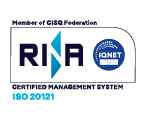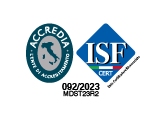Rho (MI), 8 May 2025 – The steel industry is united in its stance: addressing the climate change challenge is not a matter of choice. However, the prevailing economic and geopolitical instability is hampering companies’ decarbonisation investments planned in recent years, and may even delay legislative targets, as new and pressing priorities demand immediate attention.
This was the key takeaway from the final-day conference held today at Made in Steel, the international conference and exhibition dedicated to the steel sector. The event, titled ‘Road to the future: decarbonising the European steel sector while remaining competitive’, brought together industry leaders and experts to discuss the way forward.
In the European Union, blast furnace-based steel production remains dominant, accounting for 56.3% of output. The European Commission’s stringent targets for CO₂ emissions reduction by 2030, along with the rising cost of carbon under the Emissions Trading System (ETS), have compelled leading steel producers to accelerate their decarbonisation strategies. These include transitioning from integrated-cycle plants to electric arc furnace (EAF) technologies, which rely on direct reduced iron (DRI) or hot briquetted iron (HBI), in addition to scrap, as primary inputs.
According to an analysis conducted by the Siderweb Research Office, 28 new electric arc furnaces (EAFs) are expected to become operational in the European Union by 2030, with a combined annual production capacity of approximately 43 million tonnes of steel. Of these, 17 plants will be equipped with an integrated pre-reduction facility, capable of converting iron ore into direct reduced iron (DRI) or hot briquetted iron (HBI). Among the 28 planned installations, 24 are intended to replace existing blast furnace-based production, corresponding to roughly 34 million tonnes per year, while four entirely new EAFs—each with an adjoining pre-reduction plant—will add fresh capacity to the market. Furthermore, five additional pre-reduction plants are slated for installation across the EU, aimed at supplying DRI/HBI to both existing electric arc furnaces and traditional blast furnace–basic oxygen furnace (BF-BOF) systems that are not scheduled for replacement.
To meet the CO₂ reduction targets set by legislators, “we can pursue four main pathways, each with its own advantages and limitations: CCUS (carbon capture, utilisation, and storage); hydrogen; full electrification of the production process; and the use of biomass,” explained Carlo Mapelli, Professor at the Politecnico in Milan during the opening of the conference.
In Italy, approximately 80% of steel production is already carried out using electric arc furnace (EAF) technology. This method results in significantly lower carbon emissions—around 100 to 200 kilograms of CO₂ per tonne of steel produced—compared to the 1,800 to 2,000 kilograms per tonne emitted through the integrated blast furnace route.
Domestic steelmakers “have already committed substantial resources to achieve these results. Our Chalibria steel was the first in Italy to be ‘voluntarily labelled’ as ‘green’ and among the first in Europe,” stated Carlo Beltrame, Business Development Manager and CEO of AFV Beltrame Group for France and Romania. “Yet, across Europe, billions of euros in public funding are being directed to companies transitioning from the integrated cycle to electric arc furnaces. For those of us already operating with EAF technology—nothing.”
The Feralpi Group, meanwhile, “has decided not to halt” its decarbonisation strategy, as explained by Maurizio Fusato, Head of Ecological and Energy Transition at the company. “We will make major investments to further electrify our production processes, culminating in the installation of the first two rolling mills in Europe that operate without reheating furnaces—eliminating gas consumption altogether.” “Between 2022 and 2024, we reduced our Scope 1 and Scope 2 emissions by 35% through electrification and the use of both self-generated and purchased renewable energy,” he added. “The real long-term challenge will be decarbonising Scope 1 emissions that cannot be electrified. We also intend to address Scope 3 emissions by engaging the entire value chain.”
“We must intensify our collective efforts, but if they are not economically sustainable, there will be no real change,” warned Stéphane Tondo, Head of Sustainable Development Europe at ArcelorMittal. “In November, we suspended our decarbonisation projects. We are technologically prepared, with several viable solutions, but the market is simply not ready. We continue to believe that Europe remains the right place to produce steel, but competitiveness is essential. A level playing field is crucial.”
While European investments in green steel stall, Jindal Shadeed Iron & Steel is pressing ahead—outside Europe. CEO Harssha Shetty noted that “in Oman, we are already producing 3.2 million tonnes of green steel and are constructing new facilities with an additional capacity of 5 million tonnes,” powered 70% by solar energy and the remainder by green hydrogen. “At present, the cost of green hydrogen is high, but it will gradually fall. For it to be economically viable, the price must drop to around $1.50 per kilogram,” he added.
The role of distribution and processing in decarbonisation was also underlined. “Distribution now encompasses far more than cost and logistics—it also means transparency, emissions reporting, and sustainability,” stated Alexander Julius, President of Eurometal. “The supply chain is evolving into a climate-conscious system. Today, no one wants to pay a premium for steel, but the world is already changing. From a communications perspective, the topic must be addressed across the entire value chain. It’s inevitable that prices for end consumers will rise.”
Carlo Piemonte, Technical Sales Director Casting & ESP at Primetals Technologies, commented: “We are involved in the largest decarbonisation projects in Europe. The first phase is progressing, but the second and third will likely be delayed due to ongoing uncertainty.” He stressed the enormous costs of converting integrated plants to electric arc furnace technology: “These projects will only move forward with robust public support. Germany currently leads in this area, having allocated several billion euros. The issue is that political priorities have now shifted.”
Despite these challenges, Lorenzo Mottura, Executive Vice President of Edison’s Strategy, Corporate Development & Innovation Division, reaffirmed the commitment to the energy transition: “Even in a complex political and economic environment, the energy transition remains firmly on the agenda.” The most promising strategy, he noted, is a blend of efficiency, electrification, and renewable energy. He pointed to PPAs (Power Purchase Agreements) as a key tool for companies to avoid large upfront investments and highlighted woody biomass as a meaningful contributor to decarbonisation, potentially offsetting 6–8% of gas demand for industrial heat production.
Press Office
press@madeinsteel.it
Made in Steel is the leading international Conference & Exhibition for the steel industry, organized by siderweb – The Steel Community, Italy’s premier platform for information, analysis, and consulting in the steel sector. Made in Steel is Conference & Exhibition. Combining business opportunities with in-depth discussion, the event offers a dual function: trade fair and cultural forum. Through conferences, panels, and round tables, it fosters “competitive cooperation” and knowledge sharing—essential levers for corporate growth. Since 2023, the event has been ISO 20121 certified for sustainable event management.
siderweb – The Steel Community is Italy’s only online media outlet exclusively focused on the steel industry. Known for its objective and analytical style, it is a benchmark for industry professionals. Since 2009, it has tracked weekly prices for raw materials and steel products on the domestic market—now exceeding 60 price points—using a methodology certified by the Laboratory of Statistics, Data, Methods and Systems at the University of Brescia. Since 2022, it has published 5 weekly indices covering scrap, carbon steel, long and flat products, and stainless steel. Since 2005, it has organized Made in Steel—the international Conference & Exhibition dedicated to the steel supply chain—curating its content, including conferences, interviews, and market outlooks.







